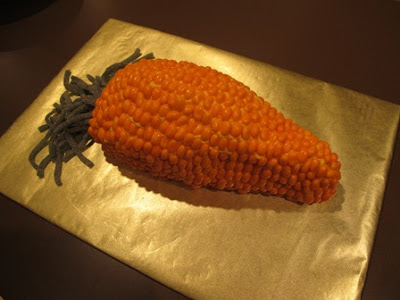
Sandwiches are my guilty pleasure, but I’m hardly a gourmet when it comes to slapping some filling between two slices of bread. For me, it’s all about fast flavor. I like the simple preparation, the quick satisfaction of hunger and the easy clean up. Some sandwiches are pantry specials - the ingredients always within reach in a pinch. I can go for days existing on Fluffernutter Sandwiches or Tuna Salad made with Miracle Whip, and I still crave several favorites from my youth - Bologna with Yellow Mustard on White Bread or Cream Cheese and Jelly (cut in four small squares, of course).
You might say I need to expand my sandwich horizons. Fortunately, my pal Susan Russo, "
The Food Blogga" has come up with the perfect answer. She's just published "
The Encyclopedia of Sandwiches" with Quirk Books. Matt Armendariz provides the sumptuous sandwich photography.
Take a look inside, and you will truly appreciate the artistry of the sandwich. Susan delves into the history and tasty trivia behind some retro stacked favorites (who knew the hot dog was once called a “Frankfurter Sandwich?), and creates some new classics that take the art of the sandwich to a whole new level. Not only are the recipes lip-smacking, but it's an engaging read.
 Susan is known for healthy and delicious California cuisine and fresh farmers market fare - so I tracked her down to find out what it was like to turn her culinary prowess to the archetypal finger food, in her new role as the Queen of Sandwiches:
Susan is known for healthy and delicious California cuisine and fresh farmers market fare - so I tracked her down to find out what it was like to turn her culinary prowess to the archetypal finger food, in her new role as the Queen of Sandwiches:
TW: How many sandwiches did you make while researching the book?
Susan: Well, I made the 110 sandwiches in the book (some more than once), some variations and several that didn't make it. So I'd say about 200. And if you're wondering if I gained weight - yes!
TW: Do you think the sandwich has been overlooked or underrated in the past as a culinary institution?
Susan: Until fairly recently, the sandwich was underrated. Nowadays sandwiches are hot! I think the introduction of international sandwiches such as the bahn mi and Italian porchetta have made the sandwich seem suddenly sexier. It also helps that over the last several years, exclusive restaurants such as Campanile in Los Angeles have created artisanal (and expensive) grilled cheese sandwiches, thereby elevating the humble sandwich's status. And with so many celebrity chefs including Tom Colicchio and Rick Bayless opening up sandwich shops, the sandwich's status just keeps soaring.
TW: Your dedication included your husband and notes that he has eaten every sandwich in the book. Did he have a favorite?
Susan: The Muffuletta. I think he actually sang when he ate it.
TW: Was there a piece of sandwich history that surprised you the most?
Susan: Yes. I was surprised to discover that the homey PB & J was once considered a delicacy due to its high price. It wasn't until the introduction of mass-produced peanut butter in the 1920s that it became the iconic American favorite we know today.
TW: Some readers might be surprised to see our favorite "Food Blogga" including the Spamwich in the book. What's your response?
Susan: Well, since the book's title is The Encyclopedia of Sandwiches, I just had to include the Spamwich. I'll admit I'm not a fan, but I didn't let my personal tastes affect my choices in writing the book. But there are plenty of people who really enjoy the Spamwich. If you can believe it, Hawaiians love the pink stuff so much they eat an average of six cans per year. You can even find it at some McDonald's and Burger King restaurants.
TW: What's your go-to bread?
Susan: Crusty Italian. I like a muscular, chewy bread.
TW: What's your "guilty pleasure" sandwich?
Susan: A potato chip sandwich with peanut butter and pickles. I can't believe I just admitted that.
TW: What do you see as the essential ingredients for an outstanding sandwich?
Susan: I think it's subjective, so my honest answer is your favorite bread, your favorite fillings and anything else you want to squirt or pile on top!
To celebrate the publication of Susan's new book, I'm giving away one copy of “The Encyclopedia of Sandwiches” to a reader of this post chosen at random. Simply leave a comment before 11:59 p.m. on Saturday, April 23rd that mentions your favorite sandwich and you'll be eligible. Sorry, but we are only able to ship within the United States. The winner will be selected and announced on Sunday, April 24th. Meanwhile, I'm off to buy some Spam and a jar of pickles. Or maybe I’ll really go crazy and indulge in a Banana Fluffernutter!
©2011 T.W. Barritt All Rights Reserved

 Happy Easter and Happy Spring! If, by chance, you’ve just been visited by the most famous rabbit of all (and I don’t mean Bugs) you might want to take a moment to reflect on the Big Bunny’s favorite food – The Carrot. Here’s a little carrot trivia to crunch on:
Happy Easter and Happy Spring! If, by chance, you’ve just been visited by the most famous rabbit of all (and I don’t mean Bugs) you might want to take a moment to reflect on the Big Bunny’s favorite food – The Carrot. Here’s a little carrot trivia to crunch on: 





























